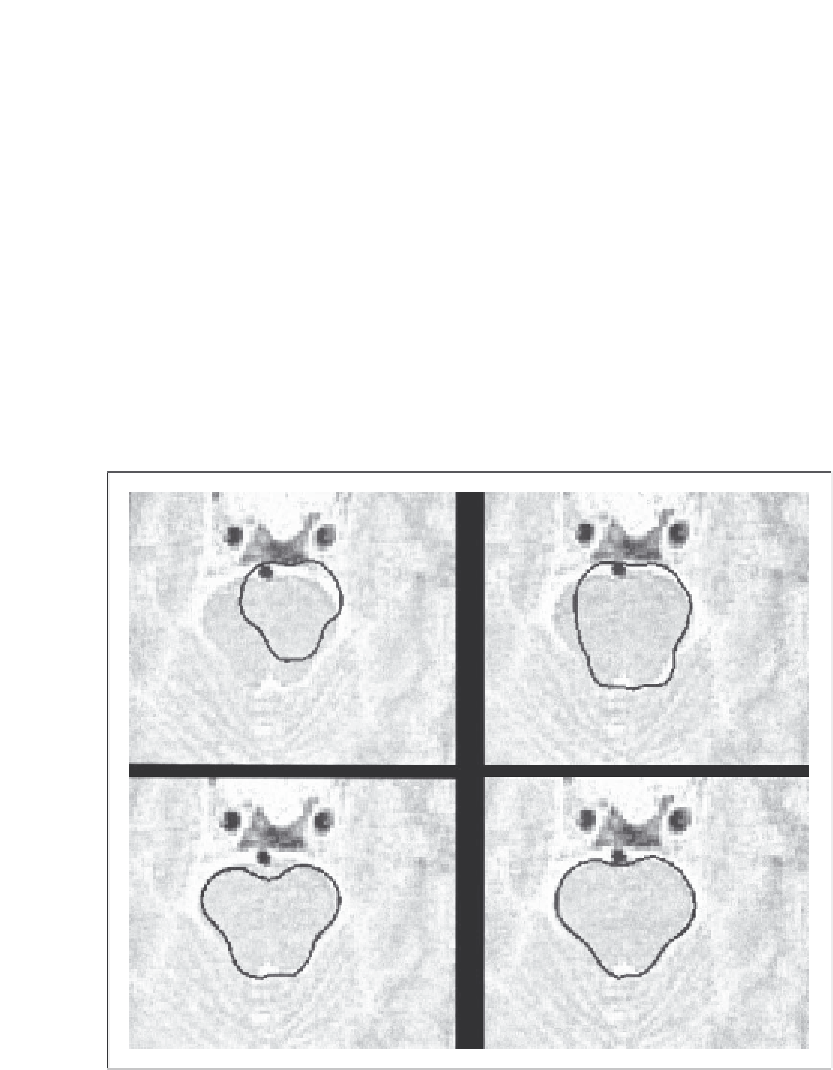Image Processing Reference
In-Depth Information
the low frequency components, as used in image coding). Note that in order to examine the
statistics of the labelled landmark points over the training set applied to a new shape, the
points need to be aligned and established procedures are available (Cootes, 1995).
The process of application (to find instances of the modelled shape) involves an iterative
approach to bring about an increasing match between the points in the model and the
image. This is achieved by examining regions around model points to determine the best
nearby match. This provides estimates of the appropriate translation, scale rotation and
eigenvectors to best fit the model to the data, and is repeated until the model converges to
the data, when there is little change to the parameters. Since the models only change to
better fit the data, and are controlled by the expected appearance of the shape, they were
called active shape models. The application of an active shape model to find the brain stem
in a magnetic Resonance image is shown in Figure
6.14
where the initial position is shown
at the top left and the final extraction, after 14 iterations, is at the bottom right, with the
results at four and eight iterations in between.
Figure 6.14
Finding the brain stem using an active shape model (
©
BMVA Press 1997
)
Active shape models have been applied in face recognition (Lanitis, 1997), medical
image analysis (Cootes, 1994) (including 3D analysis (Hill, 1994), and in industrial inspection
(Cootes, 1995). Recently, a similar theory has been used to develop a new approach that
incorporates texture, called
active appearance models
(AAMs) (Cootes, 1998). This approach
















